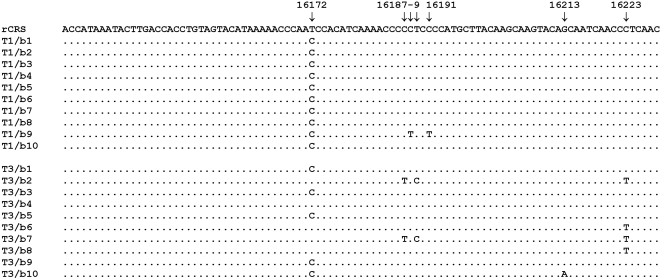Figure 5. Alignment of cloned mtDNA sequences (B-segment: nt 16132–16228) from two teeth from subject G10 from Galgedil.
rCRS, revised Cambridge reference sequence [29]; T1 and T3, tooth #1 and #3 from individual G10. Tooth #1 was untouched by humans prior to sampling while tooth #3 was sampled after archeological and anthropological manipulation. b1-10, clones 1-10 of the B-segment. The transition at nt 16172 was observed with DNA extracts from all three teeth from subject G10 (tooth #2 not shown) and is presumed to be a true substitution in the authentic DNA. Five of the clones from tooth #3 show diverging sequences (b2, b4, b6, b7 and b8) which lack the transition at nt 16172. Four of the diverging sequences harbor a transition at nt 16223 and two of these (b2 and b7) show additional transitions at nt's16187 and 16189. The fifth diverging sequence, b4, is rCRS and lacks any substitutions. The diverging sequences are considered to represent exogenous DNA, but they do not match any of the staffs (Table 2). The substitutions at nt's 16188, 16191 and 16213 are presumed to be the result of scattered post-mortem miscoding lesions, which is a characteristic finding for ancient DNA [38].

